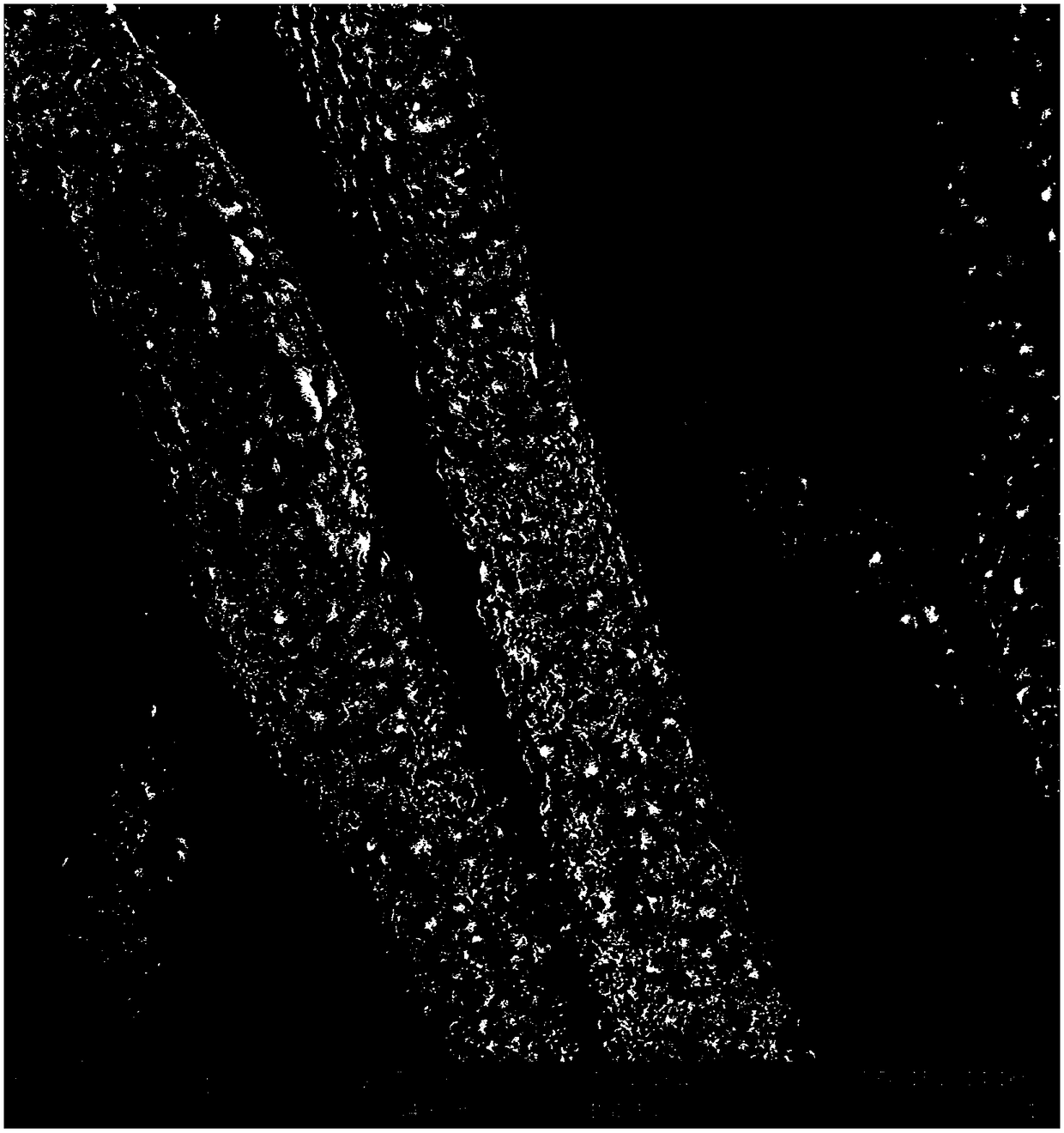Preparing method of super oil absorbing polypropylene spray-fusing non-woven fabric
A polypropylene melt-blown, non-woven technology, applied in the manufacture of single-component polyolefin rayon, non-woven fabric, rayon, etc., can solve the problem of easy cracking and plugging, rising production costs, no industrial production, etc. problem, to achieve the effect of high porosity and hydrophobicity, excellent sound insulation performance, and improved performance
- Summary
- Abstract
- Description
- Claims
- Application Information
AI Technical Summary
Problems solved by technology
Method used
Image
Examples
Embodiment 1
[0024] Example 1 Sodium chloride pore-forming agent-super oil-absorbing polypropylene melt-blown non-woven fabric
[0025] The raw material of polypropylene is Metocene X50128, a special material for polypropylene melt-blowing, the pore-forming agent is sodium chloride, a class A small molecule inorganic salt, the cleaning agent is water, and the mass percentage concentration of the pore-forming agent is 25%. Firstly, polypropylene and sodium chloride are blended uniformly with a high-speed mixer at room temperature. Then meltblown production is carried out, the process parameters are slit nozzle, spinneret diameter 0.42mm, air groove angle 30°, slit width 0.62mm, die opening temperature 260°C, hot air temperature 280°C, gas pressure 0.1Mpa, The receiving distance was 15 cm, and the spinning speed was 100 kg / h to obtain a nascent non-woven fabric. The nascent non-woven fabric is washed with detergent water to remove sodium chloride to form pores, and after drying, the porous ...
Embodiment 2
[0026] Example 2 Dioctyl phthalate pore-forming agent-super oil-absorbing polypropylene melt-blown non-woven fabric
[0027] The raw material of polypropylene is polypropylene S1003 produced by Yangzhou Petrochemical Co., Ltd., the pore-forming agent is small molecule dioctyl phthalate of Class A organic matter, the cleaning agent is ethanol, and the mass percent concentration of the pore-forming agent is 75%. Firstly, polypropylene and dioctyl phthalate are blended uniformly with a high-speed mixer at room temperature. Then meltblown production is carried out. The process parameters are slit nozzle, spinneret diameter 0.60mm, air groove angle 40°, slit width 0.65mm, die opening temperature 170°C, hot air temperature 200°C, gas pressure 0.25Mpa, The receiving distance is 20cm, and the spinning speed is 40kg / h to obtain a nascent nonwoven fabric. The nascent non-woven fabric is cleaned with cleaning agent ethanol to remove the pores formed by dioctyl phthalate, and after dryin...
Embodiment 3
[0028]Example 3 Cellulose acetate pore-forming agent-super oil-absorbing polypropylene melt-blown non-woven fabric
[0029] The raw material of polypropylene is Escorene 3546G, a special material for polypropylene melt-blowing, the pore-forming agent is B-type polymer cellulose acetate, the cleaning agent is acetone, and the mass percentage concentration of the pore-forming agent is 35%. Firstly, polypropylene and cellulose acetate are blended uniformly with a stirring mixer at room temperature. Then meltblown production is carried out, the process parameters are slit nozzle, spinneret diameter 0.40mm, air groove angle 45°, slit width 0.60mm, die opening temperature 320°C, hot air temperature 340°C, gas pressure 0.4Mpa, The receiving distance was 18cm, and the spinning speed was 80kg / h to obtain a nascent nonwoven fabric. The nascent non-woven fabric is cleaned with cleaning agent acetone to remove the pores of cellulose acetate, and after drying, the porous super oil-absorbi...
PUM
| Property | Measurement | Unit |
|---|---|---|
| diameter | aaaaa | aaaaa |
| diameter | aaaaa | aaaaa |
| porosity | aaaaa | aaaaa |
Abstract
Description
Claims
Application Information
 Login to View More
Login to View More - R&D
- Intellectual Property
- Life Sciences
- Materials
- Tech Scout
- Unparalleled Data Quality
- Higher Quality Content
- 60% Fewer Hallucinations
Browse by: Latest US Patents, China's latest patents, Technical Efficacy Thesaurus, Application Domain, Technology Topic, Popular Technical Reports.
© 2025 PatSnap. All rights reserved.Legal|Privacy policy|Modern Slavery Act Transparency Statement|Sitemap|About US| Contact US: help@patsnap.com



